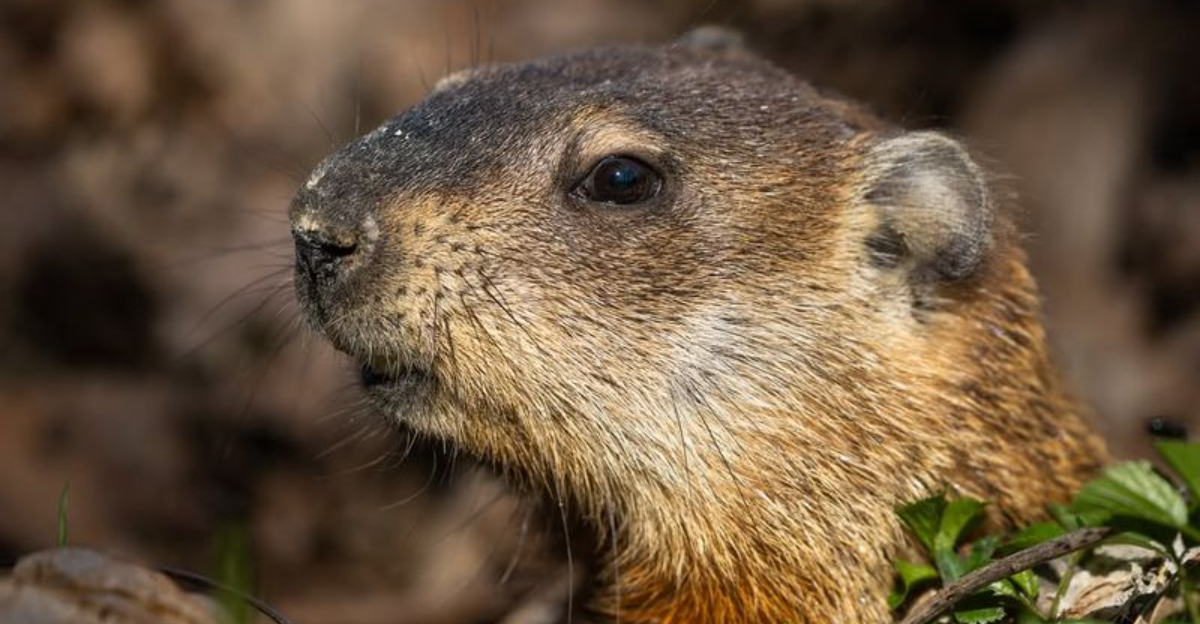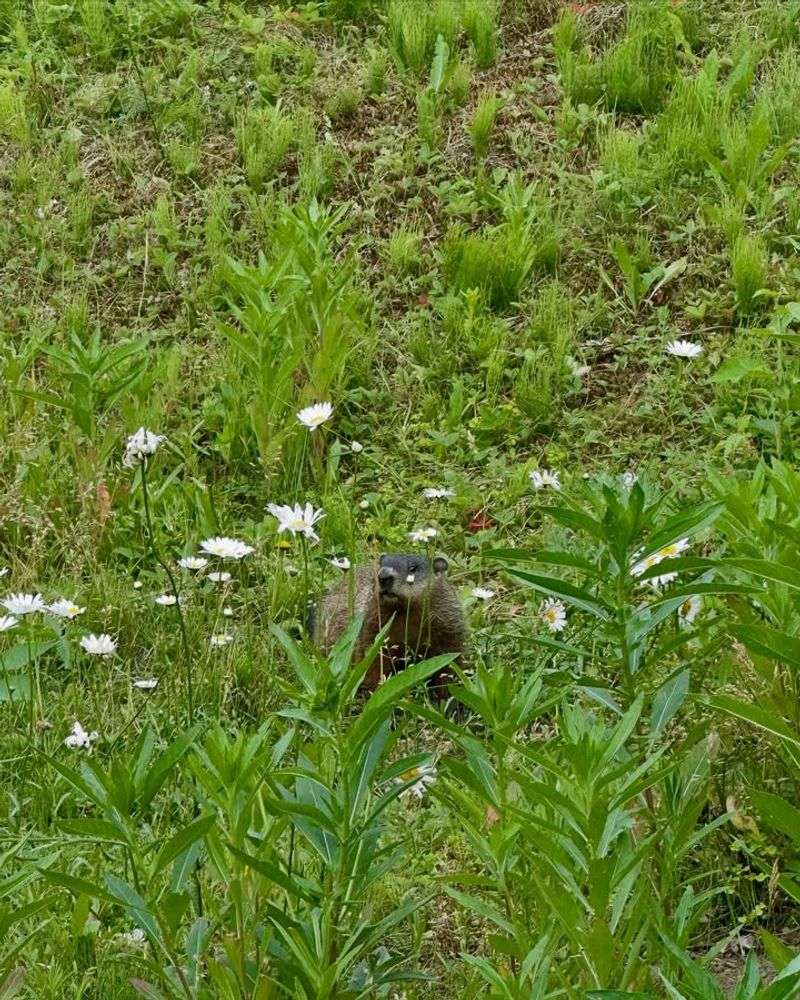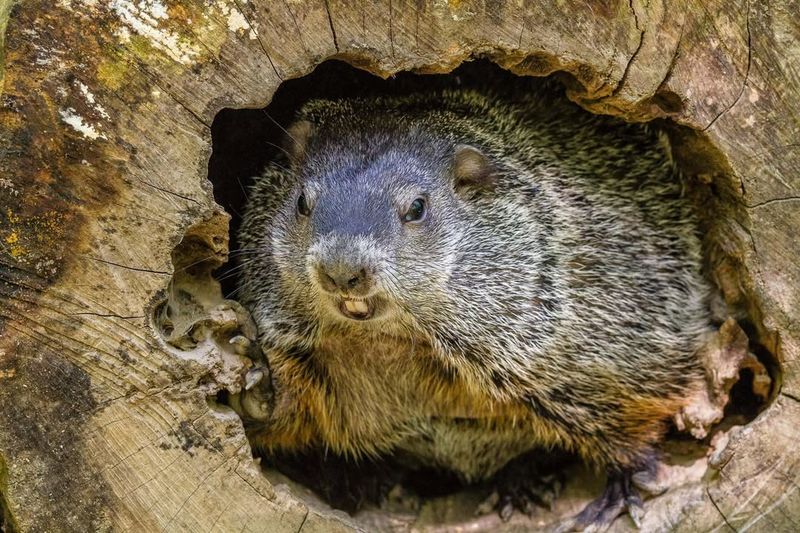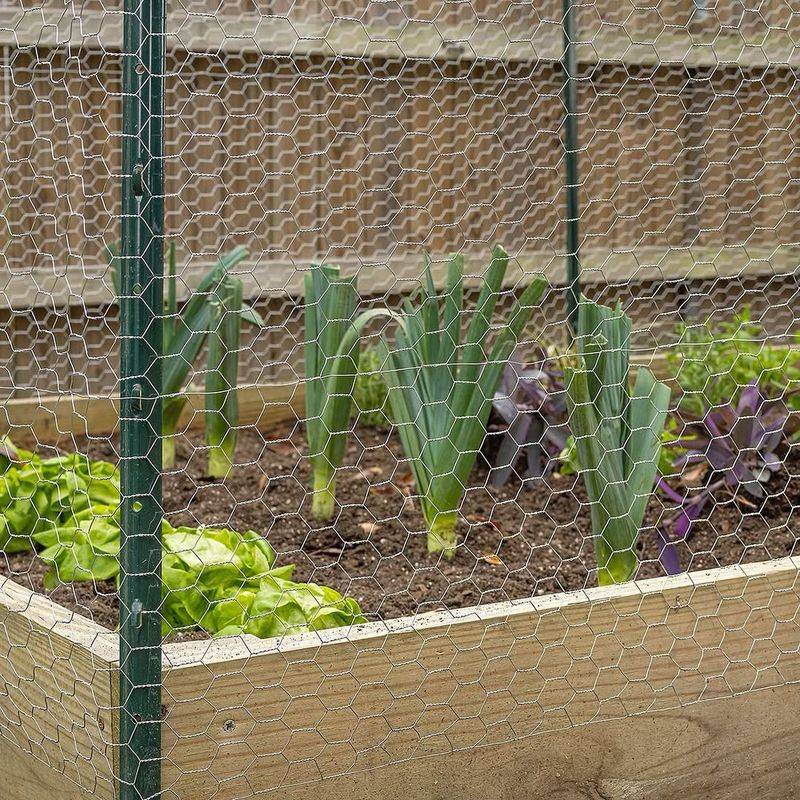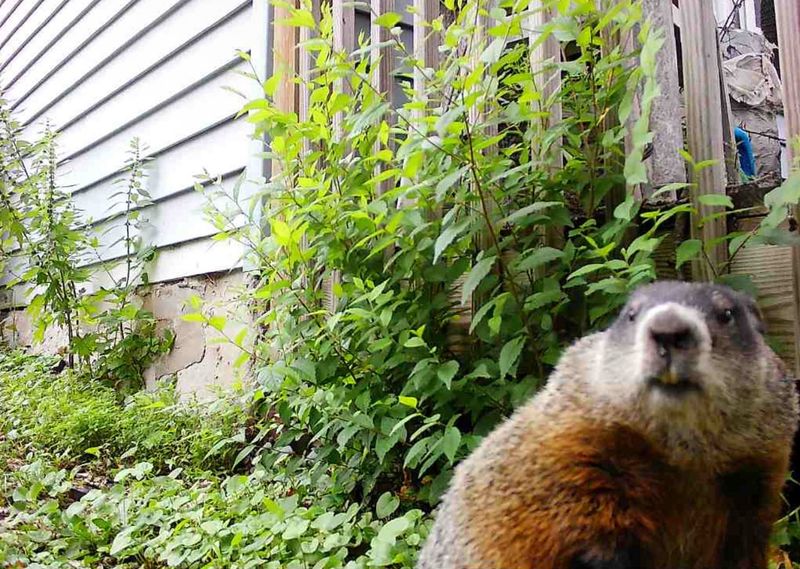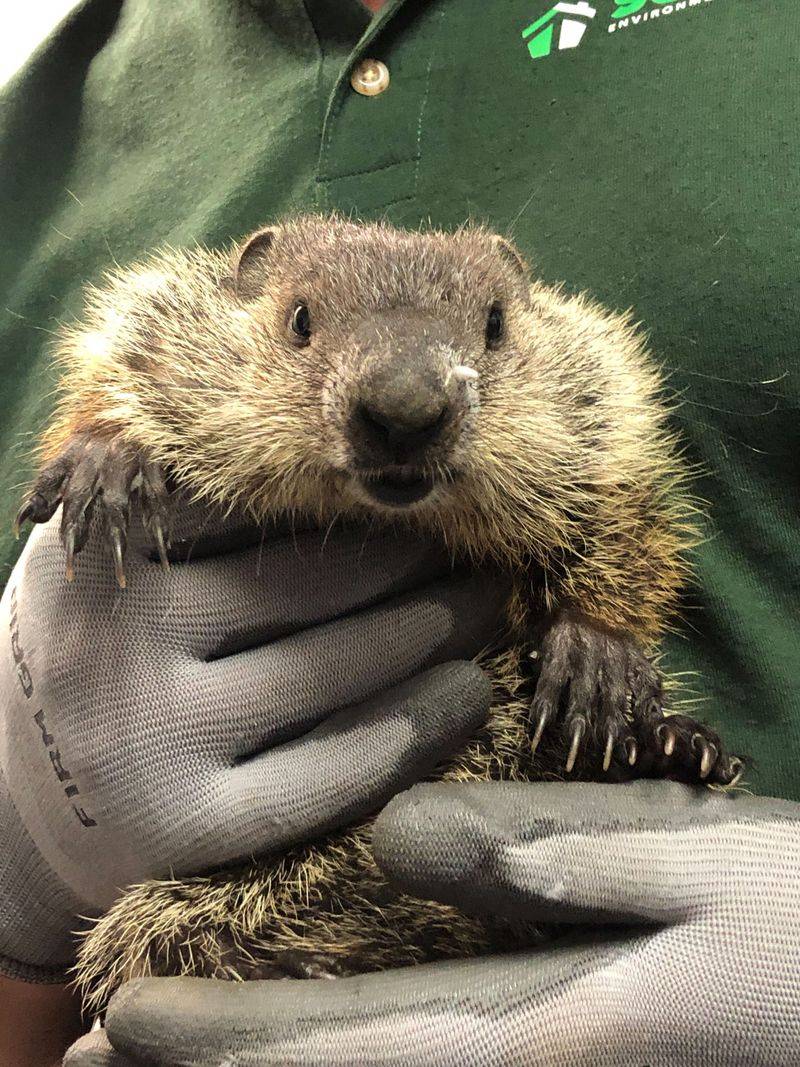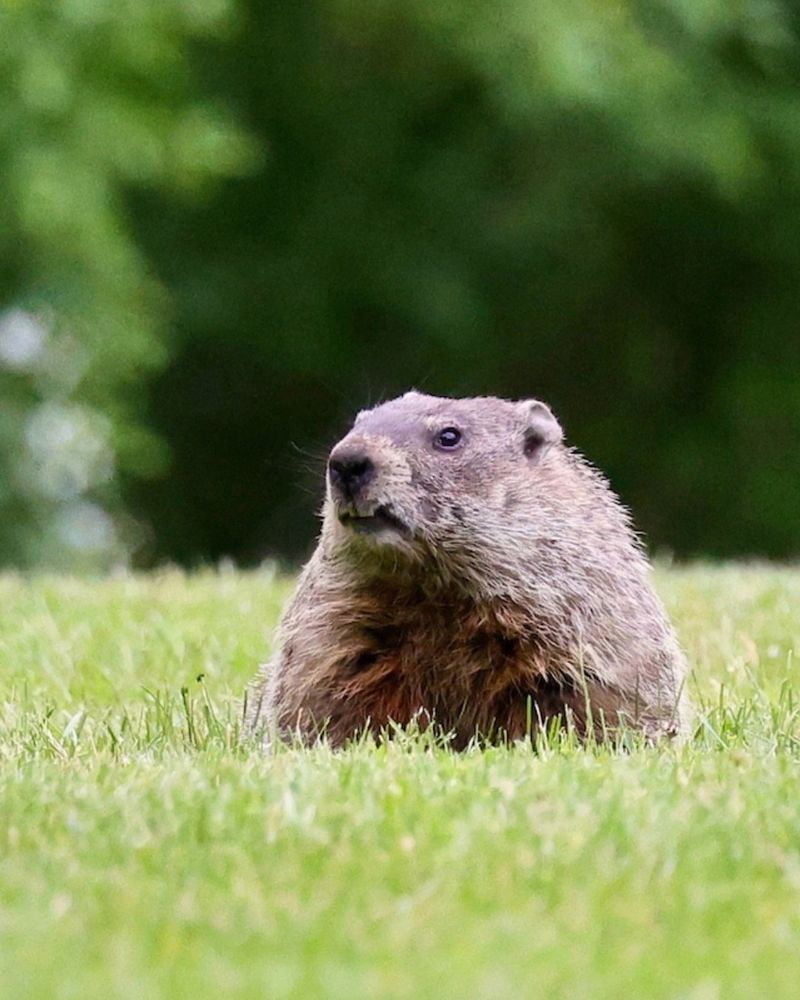A groundhog on a Maryland lawn can spark alarm at first glance, yet the situation rarely calls for panic. This stout visitor often sticks to a routine, keeps to itself, and drifts off once it finishes its usual patrol.
A calm approach, a bit of insight, and a focus on safety place you miles ahead. In most cases, this surprise guest amounts to far less trouble than its reputation suggests.
1. Stay Calm And Observe From A Distance
Groundhogs are naturally shy animals that prefer avoiding humans whenever possible. When you spot one in your yard, resist the urge to approach or chase it away immediately.
Watching from inside your home or at least ten feet away gives you a chance to see what the groundhog is doing without scaring it. Most of the time, they are just looking for food or passing through.
Staying calm prevents startling the animal, which could cause it to act unpredictably or dig a burrow nearby out of fear.
2. Check For Burrow Entrances Around Your Property
Burrows are the biggest sign that a groundhog plans to stick around your property for a while. Walk around your yard, garden beds, and foundation areas to look for holes about six to twelve inches wide.
You might notice freshly dug dirt piled near the entrance, which means the burrow is active. Groundhogs often create multiple openings for escape routes, so finding one hole could mean there are others.
Identifying burrows early helps you decide whether you need to take action or simply monitor the situation.
3. Remove Food Sources That Attract Them
Groundhogs love munching on clover, dandelions, vegetables, and tender garden plants. If your lawn has plenty of these tasty treats, you are basically setting up a buffet for them.
Cutting back overgrown grass, removing fallen fruit, and protecting vegetable gardens with fencing can make your yard less appealing. Bird seed scattered on the ground also attracts groundhogs, so consider using feeders that catch spills.
Making your property less inviting encourages groundhogs to search for meals elsewhere without needing traps or chemicals.
4. Install Simple Barriers To Protect Gardens
Did you know groundhogs can climb and dig? That means your garden fence needs to go both up and down to work effectively.
A chicken wire or hardware cloth fence should stand at least three feet tall and extend about one foot underground to stop digging. Bending the buried portion outward creates an extra barrier that discourages tunneling beneath it.
This simple setup protects your prized tomatoes and lettuce without harming the groundhog, letting both you and the animal coexist peacefully in the same neighborhood.
5. Avoid Direct Contact Or Attempting To Touch Them
Groundhogs might look adorable and cuddly, but they are wild animals with sharp teeth and claws. Approaching one too closely can make it feel trapped, and a scared groundhog may bite or scratch to defend itself.
Even if the groundhog seems calm, remember that it could carry diseases like rabies, though this is uncommon. Keep pets and children away from the animal as well.
Admiring groundhogs from afar keeps everyone safe and reduces stress for the animal, allowing it to move along naturally.
6. Use Natural Repellents To Discourage Visits
Groundhogs rely heavily on their sense of smell to find food and detect danger. Strong scents like cayenne pepper, garlic, and ammonia-soaked rags placed near burrow entrances can make your yard unpleasant for them.
Commercial repellents designed for groundhogs are also available at garden stores and work without harming the animals. Reapply these products after rain to maintain their effectiveness.
Natural repellents offer a humane way to encourage groundhogs to relocate while keeping your lawn and garden free from harsh chemicals.
7. Contact A Wildlife Professional If Needed
Sometimes groundhogs become too comfortable or cause significant damage that requires expert help. Licensed wildlife removal specialists understand groundhog behavior and can safely relocate them without causing harm.
Maryland has specific laws about trapping and moving wildlife, so professionals ensure everything is done legally and ethically. They can also seal burrows properly to prevent new groundhogs from moving in later.
Hiring an expert saves you time and stress while giving the groundhog a better chance at finding a suitable new home away from your property.
8. Understand That Groundhogs Are Usually Harmless
Despite their reputation for garden mischief, groundhogs rarely pose serious threats to people or property. They are herbivores that spend most of their time eating plants, sunbathing, and preparing for hibernation.
Their burrows can occasionally weaken foundations or create tripping hazards, but these issues are uncommon and usually fixable. Groundhogs also help aerate soil and provide homes for other small animals once they abandon their burrows.
Recognizing that groundhogs are part of Maryland’s natural ecosystem helps you approach the situation with patience and perspective.
9. Wait It Out Since They Often Leave On Their Own
Patience often solves groundhog problems without any intervention at all. Many groundhogs are just passing through your yard while searching for better territory or food sources.
Even if one digs a burrow, it might abandon the spot after a few weeks if conditions are not ideal. Groundhogs hibernate from October through March in Maryland, so they disappear completely during colder months.
Waiting a bit before taking drastic action gives the groundhog time to move along naturally, saving you effort and letting nature take its course.

